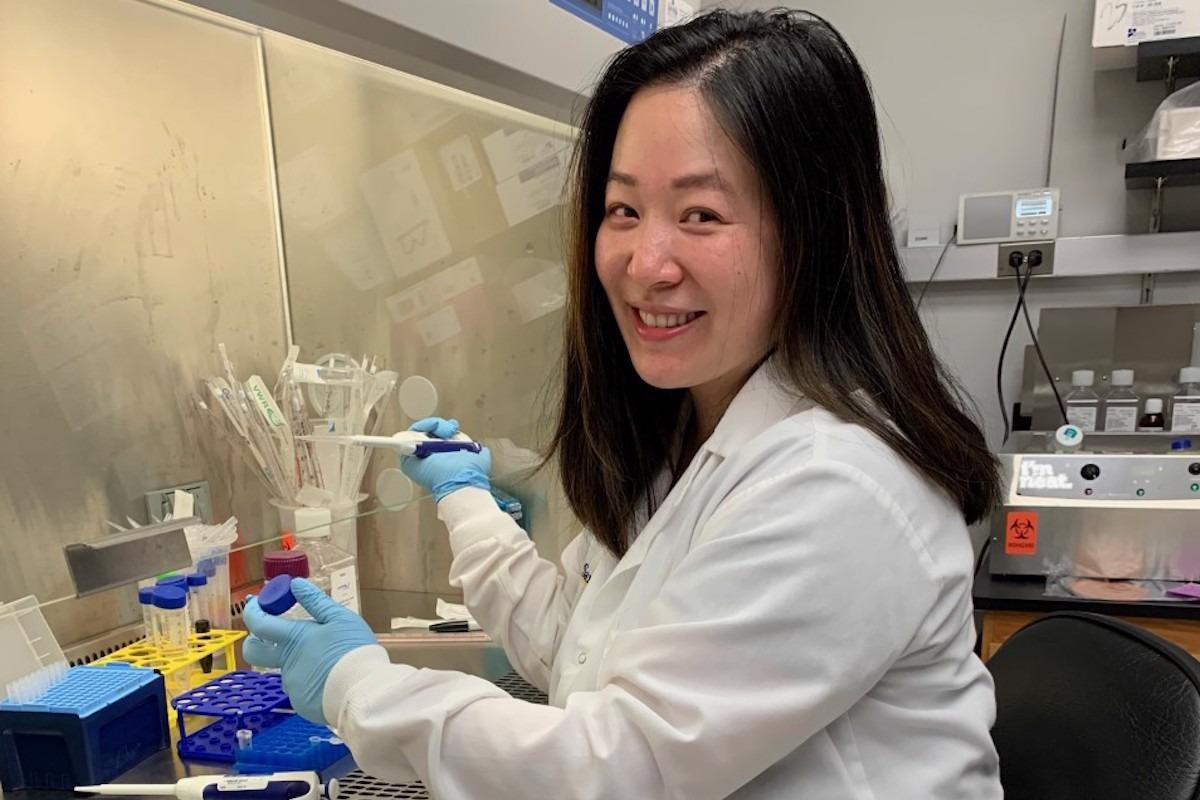Researchers at Emory University have uncovered a mechanism for skin cell death that might lead to novel therapies for “flesh-eating” infections, alopecia, hives, and possibly even melanoma, the deadliest type of skin cancer.
 Doris LaRock, PhD, studies pathogenic bacteria in Emory’s Department of Microbiology and Immunology. Image Credit: Emory University.
Doris LaRock, PhD, studies pathogenic bacteria in Emory’s Department of Microbiology and Immunology. Image Credit: Emory University.
The findings, which were published in Nature, are part of ongoing research headed by Christopher LaRock, PhD, assistant professor in Emory’s Department of Microbiology and Immunology, and Doris LaRock, PhD, assistant scientist at Emory, and funded by the National Institute of Allergy and Infectious Diseases.
According to LaRock, the research shows that a protein called gasdermin A, which their team found, causes pyroptosis, or cell death, in the skin—the body’s biggest organ. LaRock claims that this protein acts as an early warning system against bacterial assault by calling additional immune cells to the site.
In essence, what we see is that skin cells would rather destroy themselves than be taken over by dangerous bacteria.”
Christopher LaRock. PhD, Assistant Professor, Department of Microbiology and Immunology, Emory University
The body relies on cell death to keep healthy, but it may also be mistakenly activated and cause harm. However, nothing is known about how the process works at the moment. Because it reveals what triggers cell death in the skin, the discovery increases scientific knowledge of cell death.
LaRock points out that bacteria like Group A Strep (GAS), which is thought to be the major cause of skin infections like necrotizing fasciitis or “flesh-eating” disease, kill and disable hundreds of thousands of people each year because physicians often turn to debridement and amputation when antibiotics fail.
This research shows how skin cells detect GAS and how it can evade antibiotics by hiding intracellularly, and we hope to target these processes so that we can both save lives and reduce the need for surgery.”
Christopher LaRock. PhD, Assistant Professor, Department of Microbiology and Immunology, Emory University
According to LaRock, the new immune protein discovered during the study, gasdermin A, may play a vital role in not just protecting against GAS but also other diseases. “We are looking at how we can use our finding to target cell death to help us better treat infections, and also conditions such as alopecia, dermatitis, psoriasis and keloid, as those are all diseases which involve skin cell death,” LaRock adds.
To culture human skin in vitro for infection, the researchers primarily used cells from volunteers. The skin’s interaction with immune cells was also studied using a mouse model.
LaRock and the research team are looking at how the body can recognize the difference between a potentially harmful microbe and a harmless one. Scientists presently know a lot about how that process works in the later stages of a disease, but not so much about how it works in the beginning.
Pathogens like Staphylococcus aureus and GAS complicate our understanding because they blur the line by sometimes being part of the microbiota, sometimes causing mild disease, and sometimes causing severe, deadly disease. It’s important for our body to tell the difference between a dangerous pathogen and a harmless one so we can scale the magnitude of our antimicrobial responses appropriately.”
Christopher LaRock. PhD, Assistant Professor, Department of Microbiology and Immunology, Emory University
LaRock has been researching pathogens for a long time, and the NIAID award has allowed their team to investigate microbes and variables that cause inflammation. “Some pathogens are just plain deadly because they cripple our inflammatory response, like Yersinia pestis, which killed millions of people in the Middle Ages by bubonic plague. But GAS is different because it deliberately hyperactivates inflammation to seed chaos,” LaRock concludes.
Source:
Journal reference:
LaRock, D. L., et al. (2022) Group A Streptococcus induces GSDMA-dependent pyroptosis in keratinocytes. Nature. doi.org/10.1038/s41586-022-04717-x.